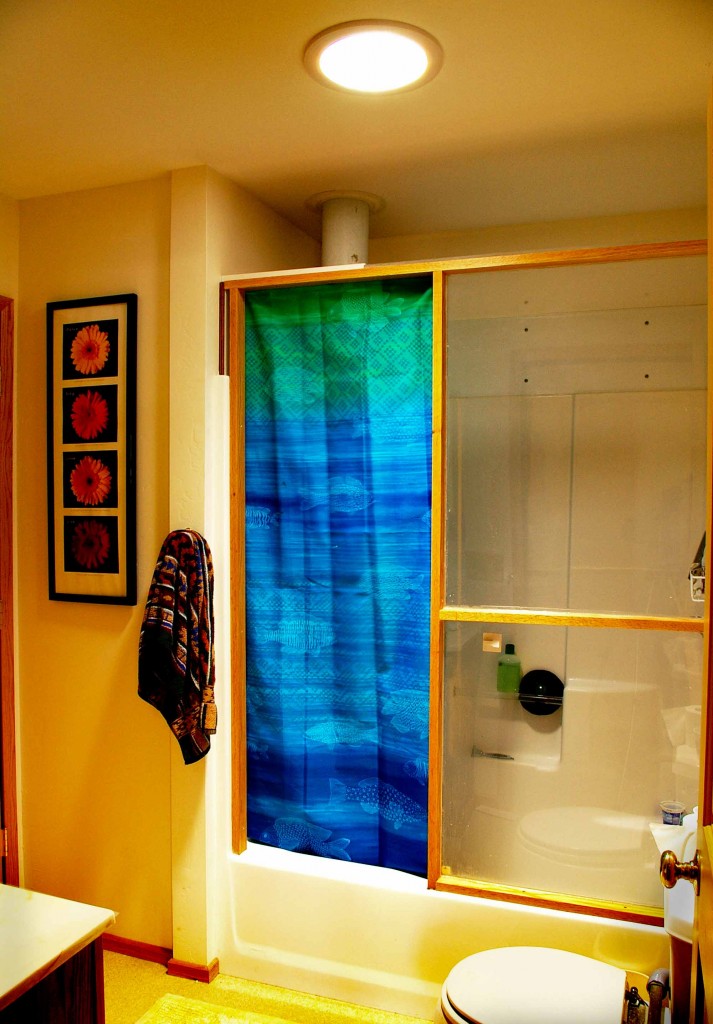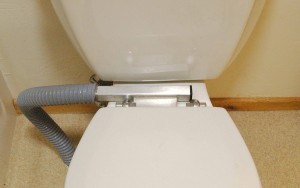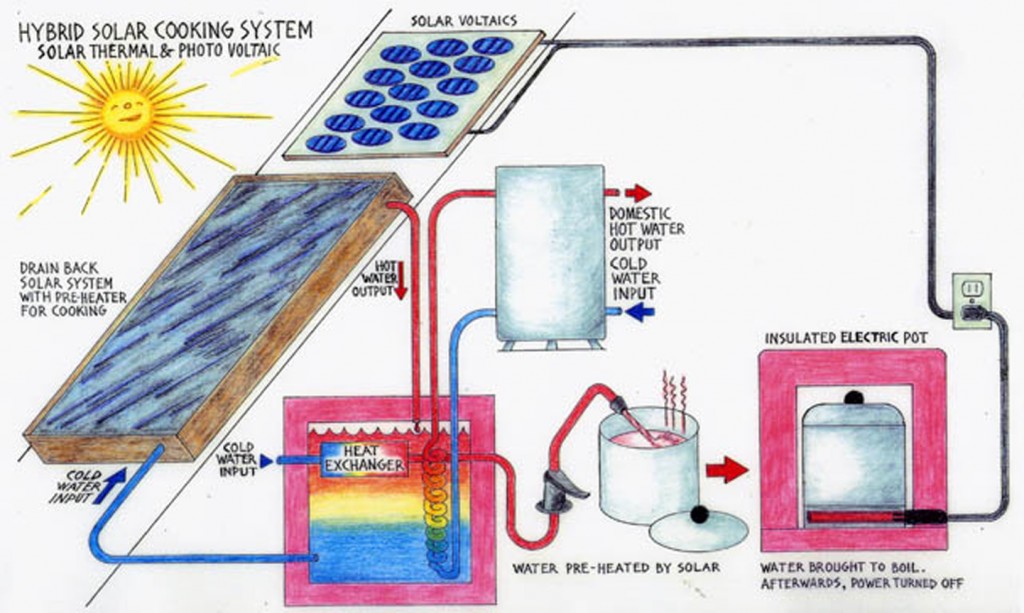Least Cost Energy Saving Rebate System
In California AB-32 requires the state to reduce its CO2 emissions by about 30% by 2020 and 80% by 2090. With the financial problems the state has it is of prime importance to try and reach these goals in the most cost effective manner. We designed a revenue neutral “paybate” system, which would encourage the most cost effective energy producing and energy conservation technologies. This letter was recently sent to our new governor Jerry Brown.
Pictured are some technologies which save energy but would not be eligible for any rebates currently available. The devices are discussed in more detail in the ASES describing my home.
—
Dear Governor Brown,
I thought you would be interested in some suggestions I have for a performance based rebate system which would reduce primary energy consumption and carbon dioxide production in a cost-effective manner.
The rebate system would be based on the total primary energy used by a home or business compared to a standard. In this system, one unit of electrical energy consumed would count as 3 units of energy obtained from natural gas, since it takes about 3 units of heat energy to produce 1 unit of electricity. The homeowner or renter rebate would be based on their primary energy consumption compared to a standard home or apartment of that size. The occupants could reduce their energy consumption in the manner they deem most cost effective. Their methods may include an array of strategies including screw-in fluorescents, sealing the distribution ducts, solar or merely thermostat adjustments etc. Even a family renting, with limited funds, could participate in this program, with no investments by wearing sweaters & shutting off lights when not needed. The program could be revenue neutral by charging more for those over the standard and rebating or reducing the cost of energy to those under the standard.
A performance-based program assures that the rebates will be made only on equipment that is functioning properly. Since many of these improvements are local, they will create jobs for the local economy. Another advantage of this system is that the rebate programs could be simplified. The programs could address improvements from refrigerator replacement to solar hot water installations in a simple rebate system.
For new construction, the rebates could be shared by the builder and the homeowner for a 5-year period. This will encourage the builder to include options that are most cost-effective and reliable. For example, the orientation of windows to prevent over heating during the summer and provide solar heating during the winter is a strategy that is effective but often overlooked in new construction. With this rebate system, builders would consider window placement in enhancing efficiency.
To encourage the use of renewable energy resources, the rebate could escalate as the home approaches zero energy consumption. For example, if the average home in a class used 1000 kw hours/mo., a home that cut its energy use by 33% could be charged half the normal cost per kw hour. A home that cut its energy use by 66% could be rebated 12 cents for each kwh they are below the standard for a period of 5 years. If a homeowner achieved zero energy for the year they could be given an additional $3,000 / year rebate for a 5 year period. This would encourage homeowners and builders to push the state of the art.
On the other hand, for example, if a home uses twice the energy consumed by the average home in its class the cost per kwh could be doubled. If a home is exceptionally large the cost per kwh could also be increased because the environmental footprint per occupant will be larger and require more energy & CO2 put into the air during construction.
A similar program could be designed for commercial buildings. A recent article in Home Power Magazine described the installation of a 5kw solar array on a small commercial metal building in Oregon. The PV system cost about $52,000. Local, state and federal incentives provided $46,000. The one story building incorporated no skylights or south-facing windows. Windows and skylights are particularly effective commercially because they provide both light and heat. Since these buildings are used primarily during the day, no storage is needed. A much more cost-effective strategy for this building would be to employ windows and skylights to supplement its lighting and heating requirements.
If we don’t use our limited resources in a more effective manner, we won’t be able to make a significant reduction in our CO2 production. A performance-based rebate program such as this could make this process much more cost-effective.
If you would like to discuss this rebate system further, please write or give me a call.
Sincerely,
Larry Schlussler, PhD
—
Suggested Rebate system – “Paybate” Approach
Promotes lowest cost energy saving measures!
- Looks at a home’s total primary energy consumed (electricity plus
gas). One unit of electricity counts as 3 units of primary energy. - Compares energy consumed to a typical home in its size range.
- System is based on performance.
- Performance can be achieved by conservation, renewables, or
thermostat settings; all up to the consumer. - Innovative energy saving methods can be incorporated without
bureaucratic obstacles. - System will encourage lowest cost methods of saving energy.
- The system is revenue neutral and prices escalate with use. When
energy consumption approaches zero, there is a substantial rebate. - Builders can participate by sharing cost savings for the first five
years. System would encourage builders to incorporate low cost
methods of conservation such as orientation. - System would simplify booking costs because a single rebate system
would replace numerous rebates for appliances and renewables.
Comments are closed.








Certainly, but everyone needs to appreciate that adding Solar to their house is an purchase that could raise the actual value of their building if / when they come to a decision to sell. With the environment the way it is going we simply cannot underestimate any product or service that gives totally free power at no cost to both the customer and more significantly the environment!